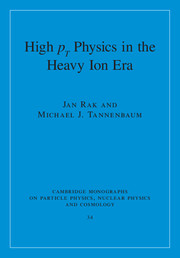The late 1960s were very exciting for experimental high energy physicists. Two new accelerators, the CERN-ISR, in Europe [240], and the National Accelerator Laboratory (NAL, now Fermilab), in the USA [241,242], were under construction. The call for proposals went out in January 1969 for the CERN-ISR [243], with eventual first collisions in January 1971. For NAL, proposals were requested in March 1970 [244] with first operation in March 1972. Everybody who was anybody in experimental high energy physics at that time was involved in proposals at one or both laboratories.
Fermilab's accelerator was a traditional fixed target machine which provided 200 to 400 GeV primary proton beams and a large variety of secondary beams, while the CERN-ISR was the first proton–proton collider. The size and scope of the machines was quite different although both were destined to make important contributions to high pT physics, a subject that did not exist before these machines operated. Also, Fermilab was a brand new laboratory totally dedicated to the new accelerator while CERN had been in existence since 1954 with several operating accelerators [248].
The Fermilab program, circa 1970
Fermilab had held summer studies in 1968 and 1969 for users to help design and specify the various beams and facilities at the new laboratory. The layout of the accelerator [249] together with a more expanded view of the initial (circa 1973–1975) beam lines and facilities [250] is shown in Figure 6.1. Note the 1 km radius of the main accelerator.
